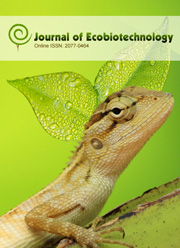Biological Deterioration and their Chemical Conservation with Reference to Chandraditya Temple, Barsoor
Abstract
Chandraditya temple is made up of sand stone which is sedimentary rock & its masonry is ashlars, but now is presently discoloured and deteriorated by growth and activity of living organism such as algae, fungus and lichen on stone surface had affected the structure badly; developing cracks as well as porosity of stones. Sand stone due to its porous nature absorbs more water in comparison to other stone & this water itself is main factor for the deterioration of stone structure. The exterior portion of temple had become blackish due to deposition of dried moss, lichen and bacterial slime. Accumulation of dust, dirt was also a base for the growth of micro vegetation which secretes organic acid for causing the harmful to the structures. This paper deals with the biodeterioration and biodegradation of Chandraditya temple by fungi and their remedial measure applied on the monuments.



 .
.